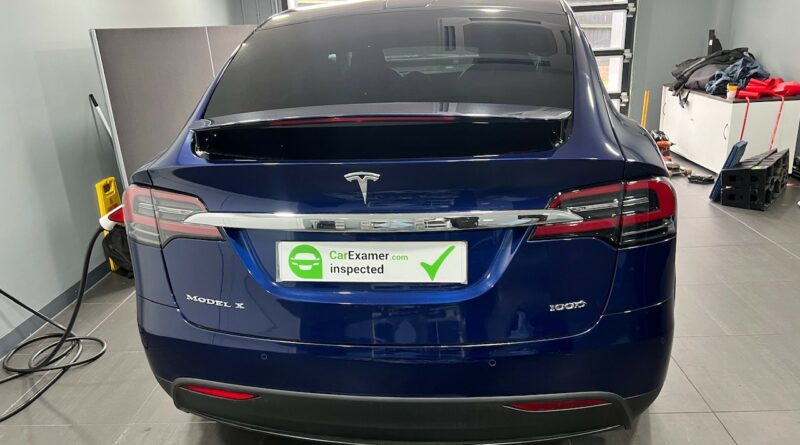Tesla Model X Service Schedule: Intervals
This article delves into the key aspects of the Tesla Model X service schedule, highlighting the importance of regular maintenance for a seamless driving experience. Owning a Tesla Model X is not just about embracing cutting-edge electric vehicle (EV) technology but also involves responsible maintenance to ensure optimal performance and longevity. Tesla, known for its innovative approach to vehicle servicing, provides Model X owners with a service schedule that aligns with the unique requirements of electric vehicles. Check Tesla S.
- Introduction to Tesla’s Approach: Tesla’s approach to vehicle servicing is distinct from traditional automakers. The company relies on over-the-air (OTA) updates, diagnostic tools, and remote monitoring to address issues and improve vehicle performance without the need for frequent physical service appointments. However, certain components still require periodic inspection and maintenance.
- Regular Software Updates: Tesla vehicles, including the Model X, benefit from regular software updates delivered wirelessly. These updates enhance features, address potential issues, and introduce new functionalities, contributing to the overall efficiency and user experience of the vehicle. Owners are encouraged to keep their vehicles connected to Wi-Fi for seamless updates.
- Annual Service Inspections: While Tesla vehicles have moved away from traditional mileage-based service intervals, an annual inspection is recommended. This inspection covers key components such as brake fluid, HVAC systems, tire rotation, and overall vehicle health. Tesla’s service centers use diagnostic tools to identify potential issues before they become major concerns. Every year servicing – 12,500 miles/12 months; 25,000 miles/24 months; 37,500 miles/36 months.
Additional checks;
- Check the brake calipers; clean if necessaryevery 12,500 miles/12 months
- Reposition the wheels and tyres around the vehicle to ensure even tyre wear every 6,250 miles
- Renew the high-voltage battery coolant every 62,500 miles/60 months
- Air-conditioning dryer: renew the desiccant bag every 50,000 miles/48 months
- Renew the dust and pollen filter every 37,500 miles/48 months
- Battery Maintenance: Tesla’s electric vehicles, including the Model X, come with an impressive battery life. However, periodic checks and maintenance are crucial to ensure the battery’s health and longevity. The battery and its thermal management system are monitored remotely, but physical inspections may be necessary during annual service appointments.
- Tire Rotation and Alignment: Proper tire maintenance is essential for safety and performance. Tesla recommends regular tire rotations and alignments to ensure even wear and optimal handling. This can contribute to extended tire life and a smoother driving experience.
- Fluid Checks and Replacements: While Tesla vehicles have fewer fluid components compared to traditional vehicles, certain fluids, such as brake fluid, may require periodic checks and replacements. Tesla’s service technicians assess the condition of these fluids during annual inspections.
- Brake System Inspections: Tesla’s regenerative braking system contributes to reduced wear on traditional braking components. However, brake system inspections, including the brake pads and discs, are part of the annual service routine. This ensures that the braking system continues to operate effectively.
- HVAC System Maintenance: The heating, ventilation, and air conditioning (HVAC) system plays a crucial role in providing comfort to occupants. Regular checks on the HVAC system, including air filters and refrigerant levels, are conducted during annual service appointments.
Owning a Tesla Model X involves embracing a paradigm shift in vehicle maintenance. While over-the-air updates address many issues, the importance of periodic physical inspections and maintenance cannot be overstated. Tesla’s service schedule for the Model X combines innovative technology with traditional elements to ensure that owners experience the full benefits of electric mobility while maintaining the longevity and performance of their vehicles.
Applies for following models:
| Type | Engine code | Power | Model Year |
|---|---|---|---|
| 100D | L2S | 386kW | 2016 – 2019 |
| 60D | L2S | 386kW | 2016 – 2019 |
| 75D | L2S | 386kW | 2016 – 2019 |
| 90D | L2S | 386kW | 2016 – 2019 |
| Long Range | L2S-L2S | 386kW | 2019 – 2020 |
| Long Range Plus | 3D1-L2S | 413kW | 2019 – 2021 |
| P100D | L2S-L1S | 568kW | 2016 – 2019 |
| P90D | L2S-L1S | 568kW | 2016 – 2019 |
| Performance | 3D1-L1S | 585kW | 2019 – 2020 |
| Performance | L2S-L1S | 568kW | 2019 – 2019 |
| Performance Ludicrous | 3D1-L1S | 599kW | 2020 – 2020 |
| Standard Range | L2S | 307kW | 2019 – 2019 |
Buying a used VW. Buying used vauxhall, BMW, Jaguar, Ford, Volvo, Range rover, Bentley, Aston Martin, Porsche, Ferrari, Lamborghini, Maserati, Hyundai, Tesla, Honda, Pagani

